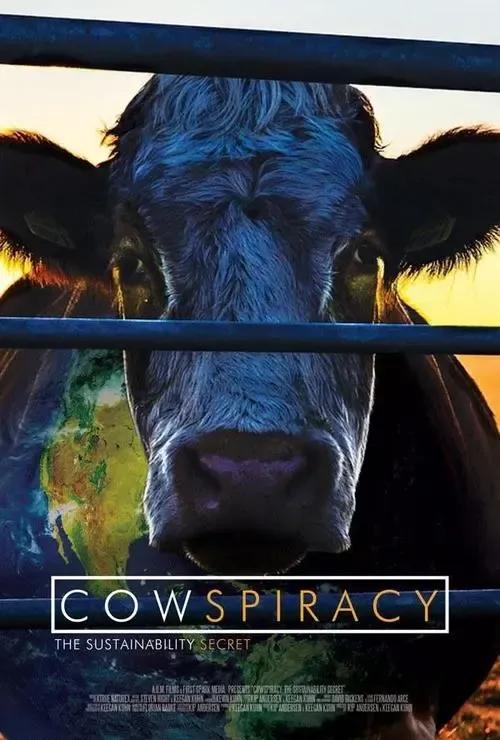
Data from the documentary COWSPRICY Cow Conspiracy:
51% of the world's greenhouse gases come from livestock and their by-products, and 13% from transportation. A plant-based diet can reduce its carbon footprint by 50%.
2. Livestock emit 65% of the world's nitric oxide, and nitric oxide is 296 times more powerful at causing the greenhouse effect than carbon dioxide.
1-2 acres of rainforest are deforested per second. Livestock farming is responsible for 90% of the destruction of the Amazon rainforest.
4, 1 hamburger = 3000 liters of water = 1 person 2 months of bathing water
5) The meat and milk industry uses 1/3 of the world's fresh water sources.
6. 5% of the water use in the United States is used by households and 55% is used by animal husbandry.
7. Garbage generated by 2,500 cows = garbage generated by cities with a population of 411,000. Animals used for use in feeding produce 3.2 million kilograms of feces per minute
8. 1/3 of the land is desertified due to animal husbandry. Livestock account for 45% of the earth's land resources. Meat eaters need 18 times more land to eat than vegans. 1.5 acres of land = 170 kg of meat = 16,783 kg of plant-based food.
9. Every day, 110 species of insects and animals disappear due to the deforestation of tropical rainforests. Livestock farming is a major cause of species extinction, marine pollution, water pollution and destruction of animal habitats.
Hazards to the global environment caused by livestock farming:
1. The impact of livestock on climate change is significant. Livestock accounts for more than 14.5% of global greenhouse gas emissions, more than all vehicles on earth combined.
2. Production of 1 kg of beef produces 56.6 kg of CO2 emissions; Production of 1 kg of lamb produces 31.3 kg of CO2 emissions 'Produces 1 kg of pork, producing 8.8 kg of CO2 emissions; Production of 1 kg of chicken produces 7.0 kg of CO2 emissions.
3. Animal husbandry occupies 30 per cent of the earth's unfrozen soil and 70 per cent of the agricultural land. Every minute, the earth is used for livestock production with a piece of land the size of 7 football fields.
Over the past 40 years, more than 40% of Central America has been deforested, and 720,000 square kilometres of rainforest in South America have been deforested to provide land for livestock production and the cultivation of fodder (mainly soybeans). Grazing is the number one cause of deforestation in the Amazon, leading to the loss of at least 70% of the region's rainforest.
5. Livestock farming occupies 1/3 of the earth's freshwater resources. Producing 1 kg of grain consumes about 1.7 litres of water; producing 1 kg of beef consumes 15 litres of water; pork consumes four times as much water as grains, and chicken consumes three times as much water as cereals.
The fact that animal husbandry is harmful to the environment has been overlooked. The World Health Organization (WHO) has issued a report that fresh red meat is classified as the second grade after processed meat products (more likely to be carcinogenic). Eat less meat or no more. Advocate vegetarianism, scientific vegetarianism, save animals, protect the environment, and improve health.
Earth, once a blue planet, has long since changed its face. In the past 50 years, the number of birds in the world has decreased by 30%, the total number of wild animals has decreased by 2/3, and there were once 1 billion to 4 billion living species on the earth, and now there are only more than 2,000 species left.
The earth is facing the sixth mass extinction process, the collapse of ecosystems, and the self-destruction of human civilization.
Those species, truly living on the same planet as us, share the same blue sky, look up at the same starry sky, and bathe in the same rays of sunshine.
What we can do now is to use our intelligence, which is the most intelligent species on earth, but what we lack is wisdom.
If you want to restore the ecological balance of the earth, you must first restore biodiversity, biodiversity is the core of nature, replace fossil fuels with inexhaustible renewable energy, and designate 1/3 of the coastal waters as no-fishing areas. The earth's resources are limited, can not withstand too much meat, the more we eat, the less left for other animals, our daily diet is mainly vegetarian, we only need half of the earth's current land, coupled with the combination of new and old technologies, it is absolutely possible to produce more food with less land, will be cut down and returned to forest, forests are the best environment to isolate carbon dioxide, but also the core area of biodiversity, newly grown trees can absorb 2/3 of the carbon emissions so far.
Humanity's mission is to take care of nature rather than destroy it, and we must learn how to coexist with nature for mutual benefit . Nature could be better without humans. Saving the earth was never about saving the planet, but about saving humanity itself. As long as human beings quietly stop developing, it will only take one year for the earth to be reborn.
The earth will not perish, it is human beings who perish.